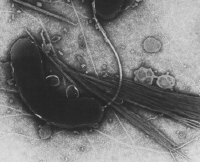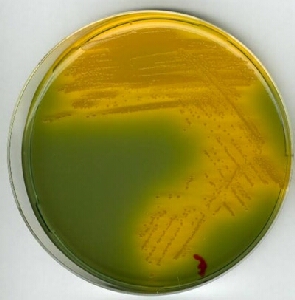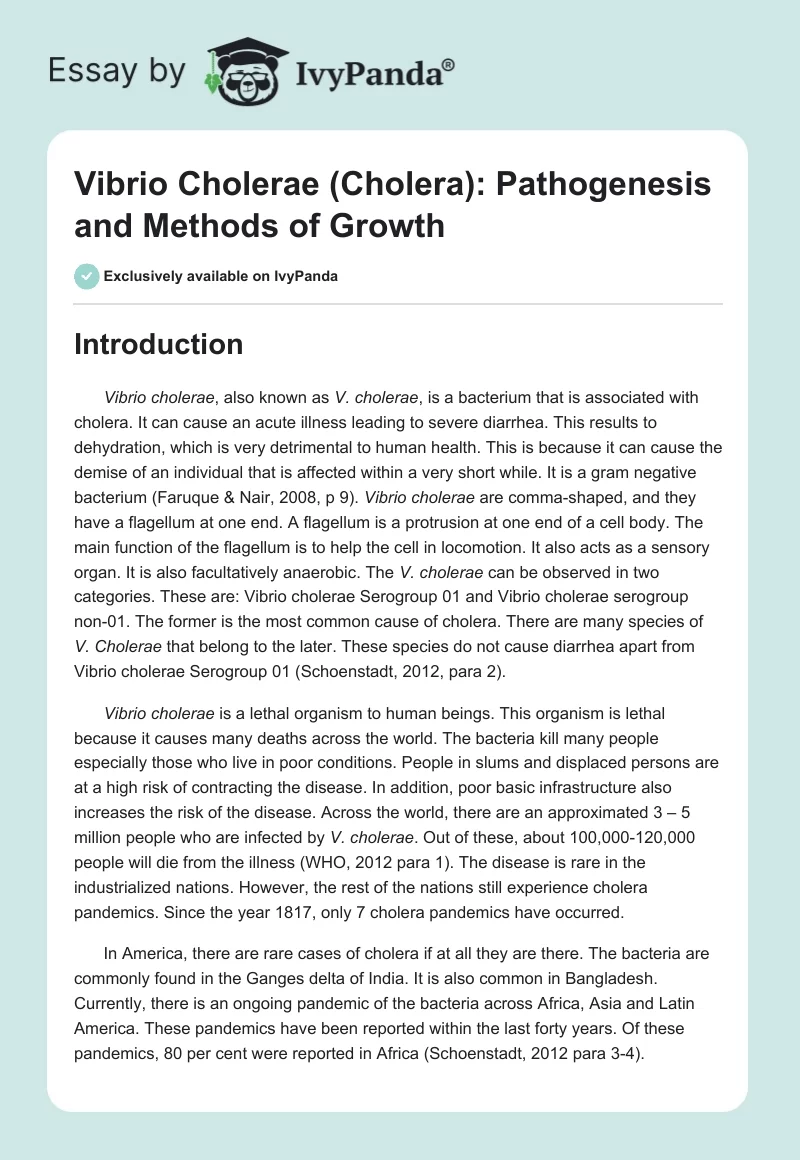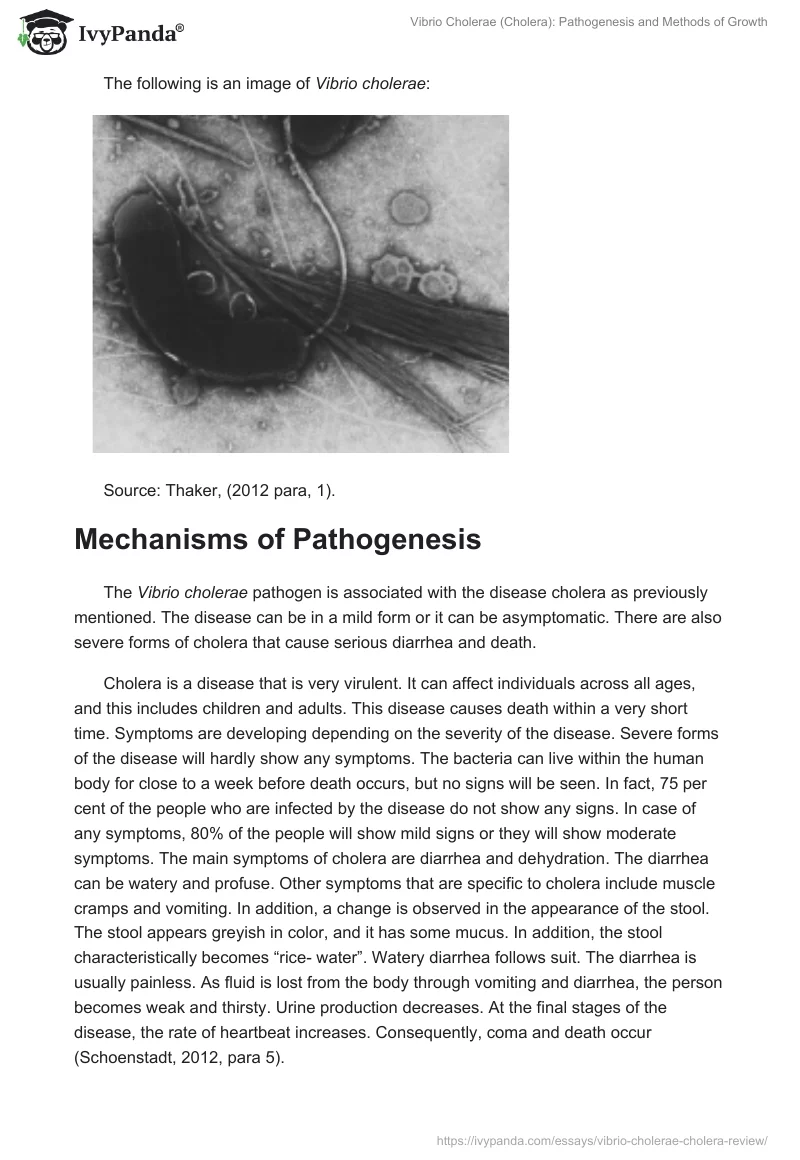Introduction
Vibrio cholerae, also known as V. cholerae, is a bacterium that is associated with cholera. It can cause an acute illness leading to severe diarrhea. This results to dehydration, which is very detrimental to human health. This is because it can cause the demise of an individual that is affected within a very short while. It is a gram negative bacterium (Faruque & Nair, 2008, p 9). Vibrio cholerae are comma-shaped, and they have a flagellum at one end. A flagellum is a protrusion at one end of a cell body. The main function of the flagellum is to help the cell in locomotion. It also acts as a sensory organ. It is also facultatively anaerobic. The V. cholerae can be observed in two categories. These are: Vibrio cholerae Serogroup 01 and Vibrio cholerae serogroup non-01. The former is the most common cause of cholera. There are many species of V. Cholerae that belong to the later. These species do not cause diarrhea apart from Vibrio cholerae Serogroup 01 (Schoenstadt, 2012, para 2).
Vibrio cholerae is a lethal organism to human beings. This organism is lethal because it causes many deaths across the world. The bacteria kill many people especially those who live in poor conditions. People in slums and displaced persons are at a high risk of contracting the disease. In addition, poor basic infrastructure also increases the risk of the disease. Across the world, there are an approximated 3 – 5 million people who are infected by V. cholerae. Out of these, about 100,000-120,000 people will die from the illness (WHO, 2012 para 1). The disease is rare in the industrialized nations. However, the rest of the nations still experience cholera pandemics. Since the year 1817, only 7 cholera pandemics have occurred.
In America, there are rare cases of cholera if at all they are there. The bacteria are commonly found in the Ganges delta of India. It is also common in Bangladesh. Currently, there is an ongoing pandemic of the bacteria across Africa, Asia and Latin America. These pandemics have been reported within the last forty years. Of these pandemics, 80 per cent were reported in Africa (Schoenstadt, 2012 para 3-4).
The following is an image of Vibrio cholerae:

Mechanisms of Pathogenesis
The Vibrio cholerae pathogen is associated with the disease cholera as previously mentioned. The disease can be in a mild form or it can be asymptomatic. There are also severe forms of cholera that cause serious diarrhea and death.
Cholera is a disease that is very virulent. It can affect individuals across all ages, and this includes children and adults. This disease causes death within a very short time. Symptoms are developing depending on the severity of the disease. Severe forms of the disease will hardly show any symptoms. The bacteria can live within the human body for close to a week before death occurs, but no signs will be seen. In fact, 75 per cent of the people who are infected by the disease do not show any signs. In case of any symptoms, 80% of the people will show mild signs or they will show moderate symptoms. The main symptoms of cholera are diarrhea and dehydration. The diarrhea can be watery and profuse. Other symptoms that are specific to cholera include muscle cramps and vomiting. In addition, a change is observed in the appearance of the stool. The stool appears greyish in color, and it has some mucus. In addition, the stool characteristically becomes “rice- water”. Watery diarrhea follows suit. The diarrhea is usually painless. As fluid is lost from the body through vomiting and diarrhea, the person becomes weak and thirsty. Urine production decreases. At the final stages of the disease, the rate of heartbeat increases. Consequently, coma and death occur (Schoenstadt, 2012, para 5).
The microorganisms affect the intestines. This is where they start to multiply. The organism is said to be an environmental, as well as a human intestinal pathogen. The bacteria cause toxins in the intestines. This toxin that is produced by V. cholerae can stimulate the enzyme referred to as the adenylate cyclase. This enzyme facilitates the production of cyclic adenosine monophosphate also known as the cyclic AMP. Cyclic AMP is produced from adenosine triphosphate (ATP). The toxin, which is a prototypical enterotoxin, is the one that causes a profuse diarrhea. It causes the intestines to produce fluid that contains sodium bicarbonate and potassium. This content is too much for the intestines to absorb and hence the occurrence of diarrhea (Sack, Sack, Nair and Siddique, 2004 para 1). Encoding virulence genetic aspects can be categorized in two chromosomal sections. One is on the pathogenicity island, and the other one is on a filamentous bacteriophage. As a result of the clustering of the genes, it means that a horizontal gene transfer is likely to result to new endemic problems. It is important to note that the environmental conditions are responsible for regulating and coordinating multiple virulence genes (Butterton 2012 para 4).
For the organism to reach the intestine, it has to get through the body defensive mechanisms that are on the gastro intestinal tract. The mechanism contains acids. However, the organisms do not have the ability to resist acids. Therefore, for them to get through the tract, they must be in large numbers so as to withstand the acidity (Thaker, 2011, para 3). The bacteria are transmitted through consumption of contaminated water. The other mode of transmission is when an individual consumes contaminated food.
Methods of Growth in the Lab
Cultivation
Vibrio cholerae can strictly be classified as water borne pathogen. In addition, the pathogens are facultatively anaerobic. Therefore, they would require sodium chloride (NaCl) for their growth. Sodium chloride usually stimulates their growth. These pathogens are said to reduce nitrates into nitrites. They cannot grow in a broth that does not contain sodium chloride. Sodium chloride has to be added to the broth for the pathogens to grow. The V. cholerae can be studied in the laboratory. It has the ability to grow in a defined culture medium. One of the cultures that have been identified to support the growth of the pathogen was proposed by Nakashi back in the year 1962. It was later modified by Kobayashi and his colleagues in the year 1963. The culture is referred to as “Thiosulfate Citrate Bile Sucrose Agar” or simply the TCBS Agar. The culture is the best recommended for distinguished and selective cultivation of the cholera causing pathogen, as well as other forms of vibrios known to be enteropahtogenic. The culture provides conditions for rapid growth of the pathogen and other Vibrio spp (Merck, 2002 para 1). Other cultures such as the heart infusion agar, triple sugar iron agar and Kligler’s iron agar can be used (CDC, n.d., p 42).
In case of a negative reaction, no color change will be observed on the culture. It is important to note that the incubation period for the pathogen in the culture will be about 48 hours. The specimen will be taken from a stool sample or from a food sample that is contaminated. The culture is very selective such that it has the capability to suppress non vibrios that might be part of the contaminant. In addition, it has all the nutritional requirements that the Vibrio spp requires for its growth. The nutrients that are contained in the culture include yeast extracts that have nitrogenous compounds, amino acids, and vitamin B complex. All these are essential for growth of the microorganism. The culture also has oxbile and sodium citrate. These aspects are important since they help to block the development of gram positive bacteria that cause contamination such as the enterococci. Sulphur in combination with ferric citrate can detect any hydrogen sulfide that might be produced. These two compounds are contained in sodium thiosulfate. Sucrose provides carbohydrates required by Vibrios for growth while NaCl is essential to stimulate growth. The indicators bromothymol blue together with the thymol blue are responsible for color change (Sigma-Aldrich Inc, p 1).
The Vibrio spp will produce a color change to form a yellow colony. This has been demonstrated in the following diagram:

Laboratory Test
Tests can be carried out in the laboratory to detect V. cholerae in a specimen. Lab test are used as a confirmatory diagnosis since there are other diseases that have similar symptoms as those of cholera. The V. cholerae can be identified in the laboratory simply by carrying out a serological test on a stool specimen. This is just a simple test, and it can be confirmed further by carrying out more tests such as the biochemical tests. These tests should aim at establishing the microorganisms’ characteristics from those of others with similar characteristics. Tests such as bio-typing, hemolysis antimicrobial sensitivity assays, and molecular subtyping can be used to confirm the presence of V. cholerae 01. However, the use of antisera is regarded as the most rapid, as well as the most specific means of identifying the presence of V. cholerae. Identification of the enterotoxins produced by the V. cholerae and biochemical identification can fully confirm the presence of the bacteria (CDC, n.d, p 42).
Disease Treatment and Prevention
Cholera is a condition whose treatment can be attained through the use of oral rehydration salts. According to WHO (2012 para 17), more than 80 per cent cases of cholera have been treated successfully. Since the disease causes so much loss of body fluids, constant replacement of the fluids is important. In fact, in case of severe diarrhea that causes severe dehydration, the fluids are replaced intravenously. In order to reduce the duration of diarrhea, administration of antibiotics is important. This will help in reducing the volume of rehydration fluids required. In addition, antibiotics will help to reduce the duration for removing the V. cholerae from the body. Notably, antibiotics should not be administered in large amounts. There are two reasons behind this. The first one is the fact that large amounts of antibiotics do not have any effect on the spread of V. cholerae. The second reason behind the restriction of antibiotics is that they will likely increase antimicrobial resistance. Timely access to treatment is of utmost importance for effectiveness. With effective treatment, death rate is almost insignificant.
Prevention
Vibrio cholerae pathogen is associated with contaminated water. However, it can be found in contaminated food. Therefore, the first step that can be taken to prevent cholera is to ensure that the water available for consumption is clean. Multidisciplinary approach should be used in preventing the occurrence and spread of the disease. Surveillance systems can be established in order to prevent the spread of the disease through travel. They should be effective. They will be important in controlling the disease in endemic areas. In addition, they will help to mitigate cholera outbreaks. These measures will reduce the spread of cholera. Cholera outbreaks will also be reduced, as well as the number of deaths caused by cholera (WHO, 2012, para 16).
Conclusion
Cholera is a disease that is very common in crowded places and in slums where the infrastructure is poor. It is rarely found in industrialized countries. It is caused by bacteria Vibrio cholerae whose main habitat is water. The disease is important in human beings in that it causes deaths among those affected. It can also lead to death within a very short time. However, this disease can be treated. The effectiveness of treatment will depend on timely and early intervention. Its symptoms might not be noted hence increasing the risk. Prevention measures can thus be adapted to reduce its incidences.
References
Butterton, J.R. (2012). Pathogenesis of Vibrio cholerae infection; Wolters Kluwer Health. Web.
CDC (n.d.). Laboratory Methods for the Diagnosis of Vibrio cholerae; Centers for Disease Control and Prevention. Web.
Faruque, S.M. & Nair, G.B. (2008). Vibrio cholerae: Genomics and molecular biology. Norfolk: Caister Academic. Web.
Merck, K.G.A. (2002). TCBS Agar. Web.
Sack, D.A. Sack, R.B., Nair, G.B. and Siddique, A.K. (2004)., Cholera: The Lacent. Web.
Schoenstadt, A. (2012). Vibrio Cholerae. MedTV; Health Information Brought to Life. Web.
Sigma-Aldrich Inc. (n.d). 86348 TCBS Agar: SIGMA- ALDRICH. Web.
Thaker, V.V. (2011). Cholera: Medscape Reference.Web.
WHO (2012). Cholera; World Health Organization. Web.

